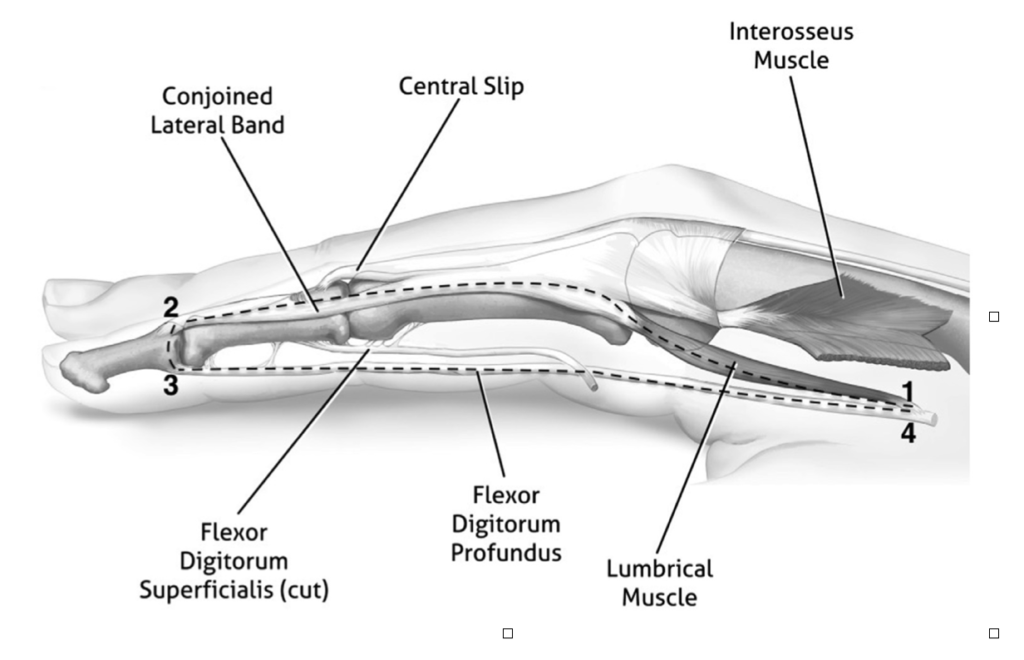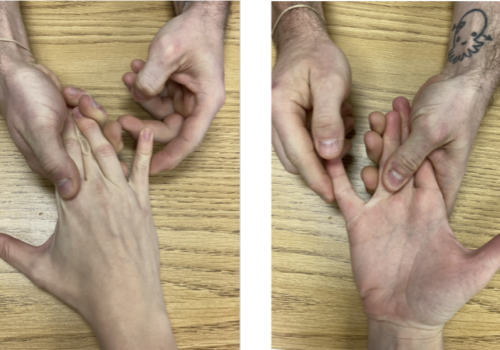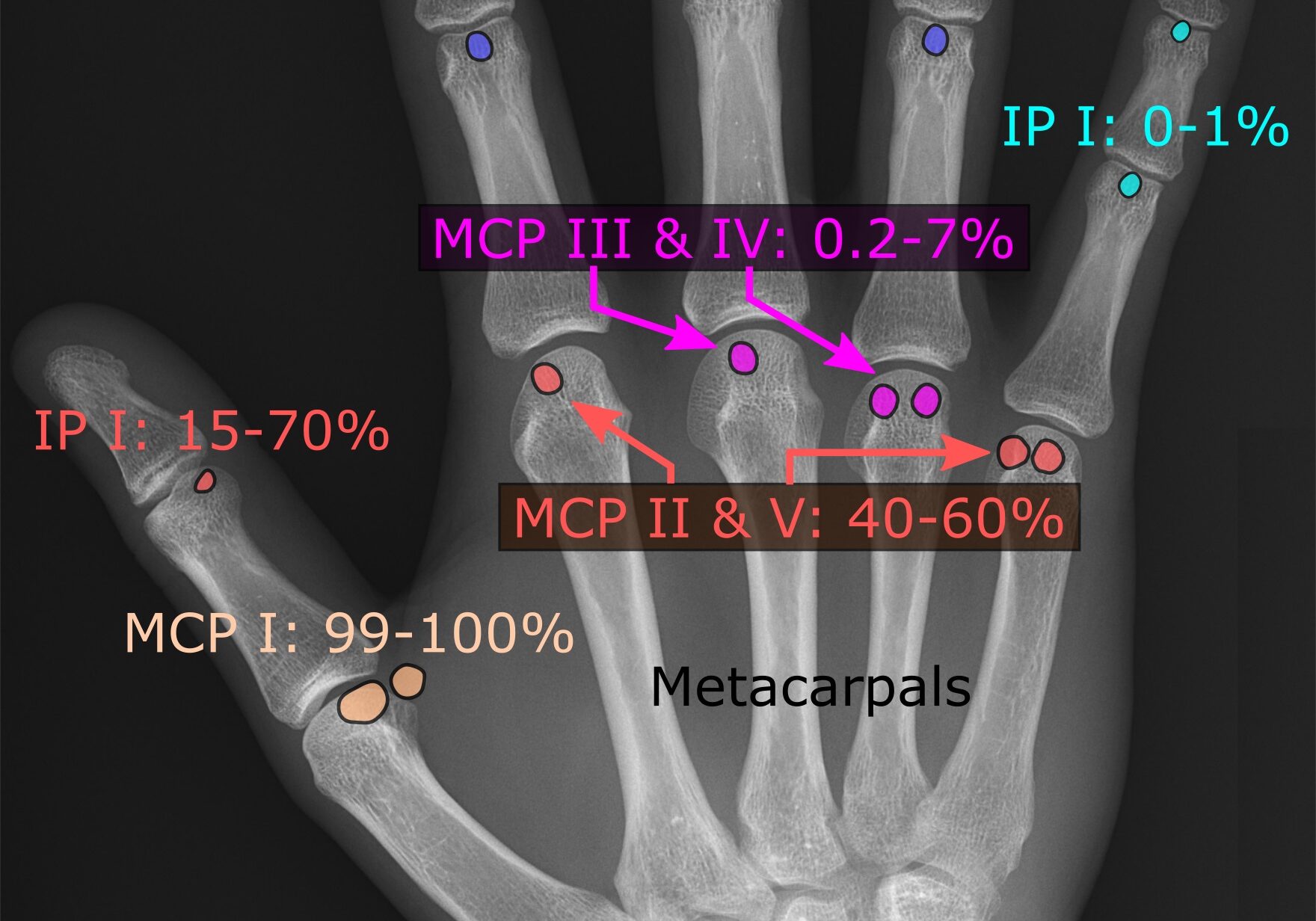Crowley, J. S., Meunier, M., Lieber, R. L., & Abrams, R. A. (2020). The Lumbricals Are Not the Workhorse of Digital Extension and Do Not Relax Their Own Antagonist. The Journal of Hand Surgery.
The Skinny:
What do the lumbricals do?
There is a long-standing belief that the lumbricals act as a counterforce to the digital flexors enough to relax the digital flexors and act as primary digital extensors. This article works to update our understanding of the role of the lumbrical based on anatomy and innervation. They build off the work of Wang et al. to develop a better understanding of what the lumbricals function actually is in digit extension and balance of forces.
In The Weeds:
To review the anatomical line of the lumbricals, check out the picture below. Also, the lumbricals have several unique properties. They have the highest spindle fiber density of any UE muscle (a property of muscles intended for refined graded control, not power). They also have the highest fiber length-to-muscle length ratio. This means that the lumbricals are best at providing a low amount of force over a wide range of motion. These two aspects refute the idea that the lumbricals are strong enough to overpower counterbalance the much larger, conversely designed, FDP & FDS.

Crowley, J. S., Meunier, M., Lieber, R. L., & Abrams, R. A. (2020). The Lumbricals Are Not the Workhorse of Digital Extension and Do Not Relax Their Own Antagonist. The Journal of Hand Surgery.
Bringing It Home:
So what? What does that mean? Rather than the lumbricals being some powerhouse of IP extension, this article builds on the Wang articles proposal. Want et al. propose that the lumbricals are a tension monitoring device that allows for refined motor coordination to aid in coordinating the stronger extrinsic muscles. Crowley et al. add to that and suggest that the lumbricals also serve as a spring in a closed loop that helps to balance the 2nd and 3rd phalanx over the 1st, since the 1st phalanx has no tendon insertions to maintain its position. That makes the 1st phalanx an intercalated segment that needs delicately maintained tension to preserve its position. This is a significant shift in the idea that the lumbricals are a strong force in digital extension, counteracting the FDP & FDS.
Rating: 5/5
While not a research study, this article adds a lot of understanding and clarification of the anatomy and role of the lumbricals. Looking at muscle size, length, fiber type, and anatomical attachment can improve our awareness of a unique muscle like this is actually doing in the hand. It is always good to stay open-minded to alternative views of our sometimes dogmatically held opinions and beliefs. There are many more significant pieces of info in this article, and I highly recommend reading it if you have a chance.
Wang K, McGlinn EP, Chung KC. A biomechanical and evolutionary perspective on the function of the lumbrical muscle. J Hand Surg Am. 2014;39(1):149e155.
1 Comments
Leave a Comment
More To Read
How to use Kinesiology Taping for Shoulder Subluxation
How to us Kinesiology Tape for Shoulder Subluxation By: Tayler Roost What is shoulder subluxation? Shoulder subluxation is a dislocation of the glenohumeral joint. This can be classified as traumatic, non-traumatic, or neurological. A traumatic shoulder subluxation can be caused by contact sports or repetitive shoulder movements. A non-traumatic shoulder subluxation can be caused indirectly…
Read MoreHand Therapy Article Review: The Radial Synergy Test, An Aid to Diagnose de Quervain’s Tenosynovitis
Chihua, L., Langford, P.N., Sullivan, G.E., Langford, M.A., Hogan, C.J., & Ruland, R.T. (2021) The radial synergy test: an aid to diagnose de Quervain’s tenosynovitis. HAND. epub ahead of print;1-6. doi: 10.1177/15589447211057297 Rapid Review By: Case Peters The Skinny: de Quervain’s tenosynovitis is a common pathology that involves swelling and thickening of the tendon sheaths…
Read MoreSesamoid Bones: What are they and what do they do?
By Brittany Carrie A Student’s Perspective During the first few weeks of my rotation, I was exposed to many new and exciting things that I had not been exposed to in the classroom setting. I observed and helped treat patients who had undergone severe trauma from lacerating tendons to complete amputations, saw different splinting techniques,…
Read MoreSign-up to Get Updates Straight to Your Inbox!
Sign up with us and we will send you regular blog posts on everything hand therapy, notices every time we upload new videos and tutorials, along with handout, protocols, and other useful information.






Great explanation and illustration